QuestionMy family just adopted an aquatic painted turtle that is a least five years old. It weighs about 10 ounces and is seven inches in length. This turtle was originally purchased from a pet store. The previous owners kept it in a shallow tank with a few stones. We believe there was insufficient light and fresh water. The turtle is lethargic, very little color, not eating, it sticks it's head out of it's shell and just lays there...very unenergetic, not interested in food. It looks like several layers of skin are ready to molt off of it's body. It does not appear to have any infections or sign of fungus, etc.
We have it in a clean tank, 70 degrees F, filter running, appropriate lighting (UVA), plenty of fresh food, a stone where it can lay out and get direct bulb light, etc.
Question: Is there any advice you can give us to make sure this turtle "recovers" quickly or a test we can do to see if it is healthy or suffering from a disease of any kind? We feel so sorry for it and want it to have the best care available.
Thanks for your time and consideration.
Jim S.
AnswerThank you for trying to help!
Now, a couple warnings:
1. I am NOT a vet and this is all based on my own understanding, experience, and research. It is not meant to replace the advice or recommendations of a vet.
2. Turtles don't do ANYTHING 'quick', so be ready for a long struggle.
Obviously, my first suggestion would be to take it to a vet, but I suspect your turtle is basically suffering from long-term poor care. Personally, I'd give it a couple weeks in healthy conditions and monitor the weight and behavior. If they improved, I'd hold off on the vet- but again, that is ME. For your own peace of mind, you may want to see a good reptile-experienced vet sooner.
It sounds like you have some experience as animal keepers, but I am not sure from your comments what your turtle experience is, so please forgive any 'DUH' things I may say that you already know.
Clean tank: Great start- the skin problems are very likely related to bad water conditions. Is the tank big enough for the turtle to get swimming exercise (at least 8 gallons of free water space minimum) AND get totally out of the water for basking? Can it get out of the water safely without abrading the belly plates (plastron)?
70 degrees is good for the coolest part of the tank. For a turtle recovering from stress, however, I'd suggest boosting the tank temps 5 degrees overall or so. Keeping the turtle a little warmer wil also speed up the metabolism and healing. Watch the turtle- if it hangs out in the warm areas, boost temps a bit more. If it hangs in the cool areas, drop temps a bit at a time.
Filters help, but turtles can get REALLY messy. A good technique to consider is the 'feeding tank technique'- create an easy to clean 2nd tank, possibly from a big plastic tub, to feed the turtle in. Wait for it to finish eating at least, or even for the turtle to defecate, then return it to the main tank and clean the feeding cage. The filter will be a LOT more effective if we can keep the food residue out of it.
Fresh food- this is a phrase that worries me a bit with new turtle keepers because it too often means lettuce and hamburger- the big turtle killing diet. For middle-age turtle, some live fish, some good greens, worms, insects, etc. are great- and there are a LOT of high-quality 'prepared' foods now for turles at any good pet shop. Rule of thumb- price is a pretty good inidicator of pet food quality... within reason.
Other help:
Calcium/phosphorous ratio. Help the turtle build strong bones and shell by making sure tha the ratio of calcium and phosporous in the food stays within a point or two of 1:1. Most nutrtion guides and the labels of most good foods will tell you the numbers you need. Add what you need as you need it. Additional calcium can be provided by some plaster of paris or clean bones in the water.
Copper helps turtles and hurts fish. Adding a piece of clean copper pipe in the water provides some copper ions- but don't do this if there are 'pet' fish in the tank! (Of course, few fish really do well in a turtle's tank, but that is a different issue!)
A bit of iodinized salt in the water helps provide nutrients and minerals, and help fight fungus and other micro-organisms. A pinch per gallon is usually all you need. An occasional gentle scrub with some wet salt helps clean the shell of crud and dead tissue.
Watch the eyes and mouth. Swollen eyes and white 'crud' in the mouth (mouthrot) are common results of poor keeping and diet. You can by over-the-counter remedies for both conditions.
Feeding- To entice the turtle to eat, try colorful foods, small amounts of different foods (liver, fish, chicken, any veggie you can find, colorful fruits (strawberries, for example), etc.) Try boosting the temps a bit more as well, at least in the feeding cage. Consider trying moving the food like you were 'fishing' for the turtle, or using live foods.
The turtle may be riddled with disease, worms, parasites, etc., but if it starts to eat and put on weight, I would not worry about that too much.
A good website to look over for more help is the California Turtle and Tortoise Club's site at www.tortoise.org.
Finally, something to consider. I don't know where you live, so you may not be able to consider this until spring, but nature is the best healer in the long run. You may want to think about releasing this turtle when and where it is safe to do so.
The 'when' would be when water temps are good and there is lots of sunlight. The 'where' is trickier- you DO NOT want to release it into a wild population because any diseases it may have could affect the wild turtles. Park ponds, cow ponds, etc. that do not seem to have a big wild population would be best.
Good luck and let me know if you have any other questions!

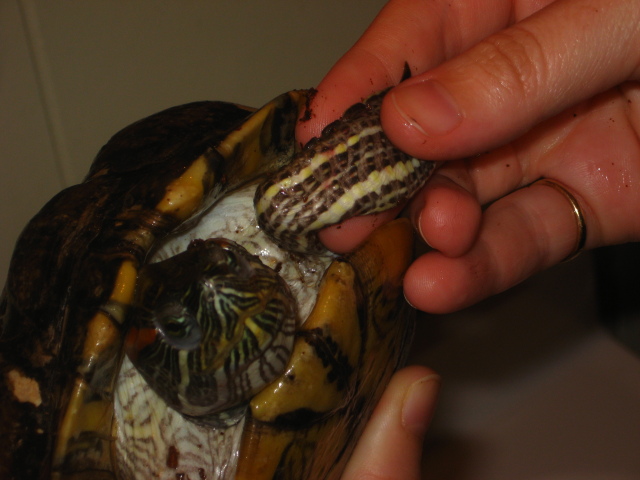 red eared slider shell rot
Question
turtles leg
We have a red eared slider, about
red eared slider shell rot
Question
turtles leg
We have a red eared slider, about
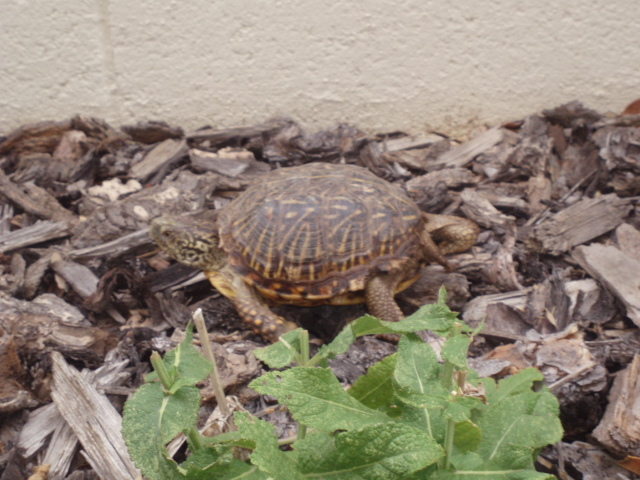 female ornate
Question
George (we thought she
Jeannie- We found a fem
female ornate
Question
George (we thought she
Jeannie- We found a fem
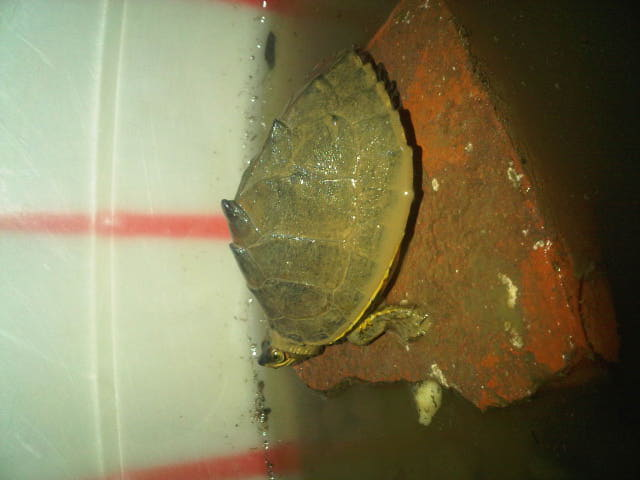 q.
Question
Sir I want to know about this t
q.
Question
Sir I want to know about this t
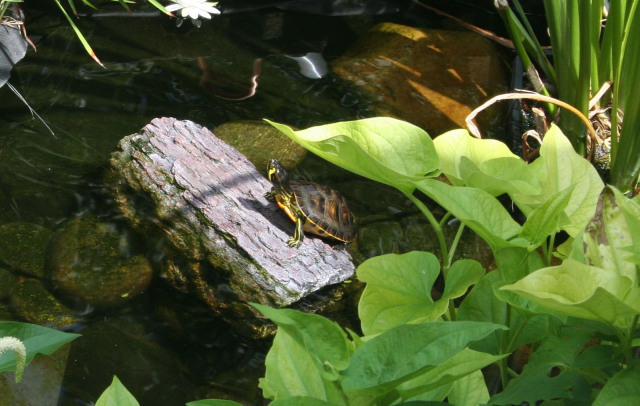 Yellow Bellied Slider in my pond
Question
Tobi Summer 2010
Hi there. Three
Yellow Bellied Slider in my pond
Question
Tobi Summer 2010
Hi there. Three
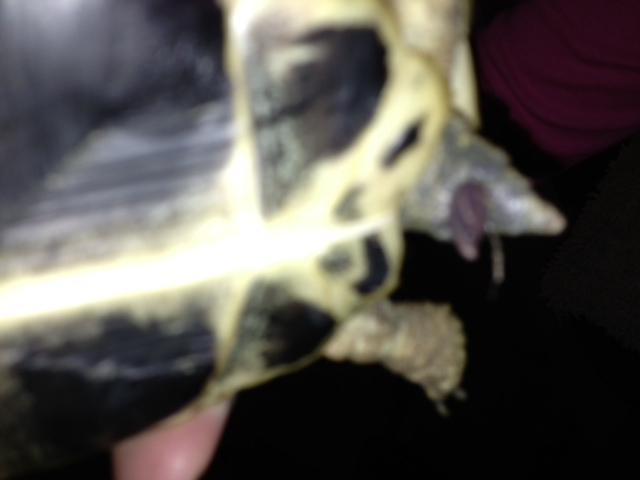 Hermann Tortoise
QuestionQUESTION: Hello. My question is in regards to o
Hermann Tortoise
QuestionQUESTION: Hello. My question is in regards to o